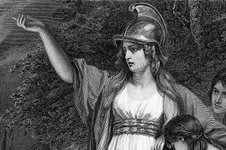
No One Should Be Surprised That Celtic Britain Was Women-Centric

How I came to see the “Great Feminization” as the most significant event of our century—and a potential threat to civilization. https://t.co/6R9wwGvUVh
Helen Andrewsx.comin the mid-first century BC, Queen Cartimandua led a confederation of Celtic tribes which were loyal to Rome – until she was ousted by her ex-husband, Venutius. This ambivalence towards gender, providing the possibility for women to become leaders of men and to achieve the highest status in Celtic society,
Alice Roberts • The Celts: Search for a Civilization
The classical writers tell us that Iron Age society was arranged in a hierarchy that bears a striking resemblance to the ideal in Greek and Roman society: peasants at the bottom; artisans, bards and druids in the middle; then nobles; and a single chieftain at the lofty apex of a triangular or pyramidal structure. Women could only gain access to the
... See more